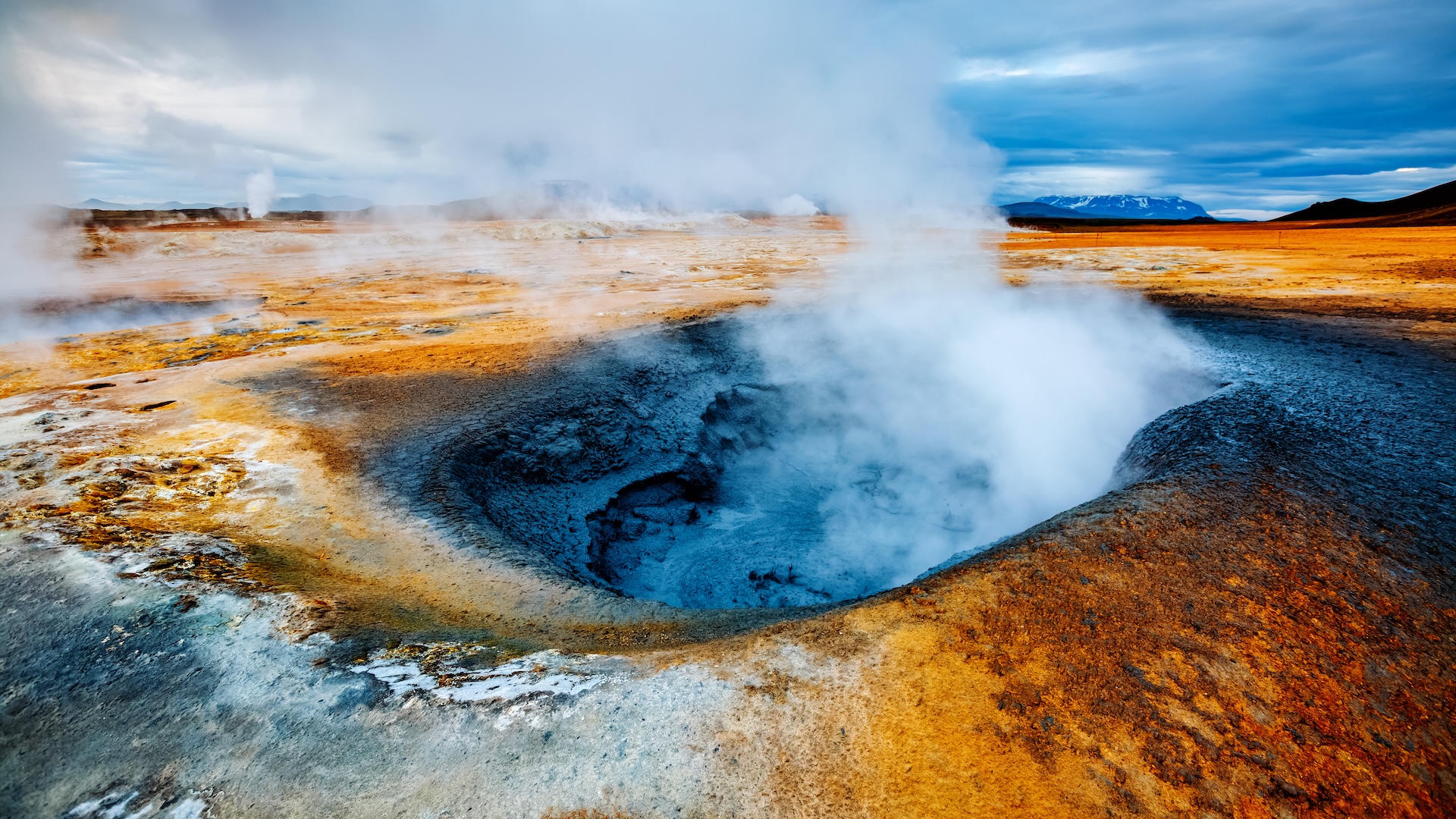American submarine, lost for over a century, discovered 'remarkably intact' off the coast of San Diego
A submarine that sank over 100 years ago during WWI has been surveyed off the coast of San Diego.
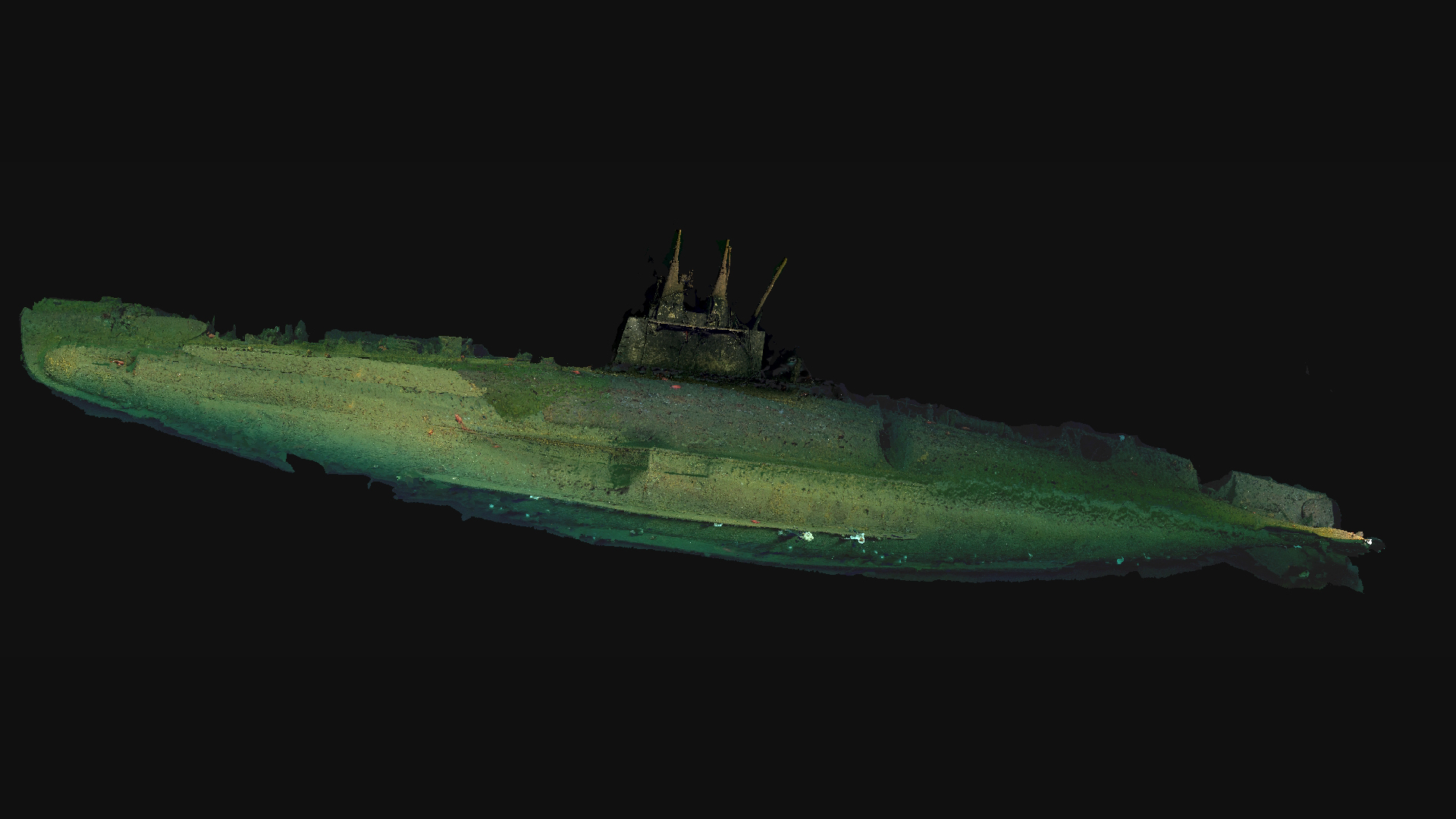
Researchers have located the wrecks of two long-lost military vehicles on the seafloor a few miles from San Diego: an American submarine that sank during a training accident in 1917, and a U.S. Navy training aircraft that crashed nearby in 1950.
The USS F-1 submarine sank in seconds after it was badly damaged in a collision with another U.S. Navy submarine. Nineteen of its crew drowned in the accident, and three were rescued by the other sub.
The sub wreck was located by accident in the 1970s, but the expedition to the site earlier this year by researchers from the Woods Hole Oceanographic Institution (WHOI) and the U.S. Navy was the first time it had been surveyed with high-resolution imaging since the sinking.
It now lies on the seafloor at a depth of more than 1,300 feet (400 meters). That's too deep for human divers, so the wreck was surveyed by operators in the human-occupied underwater vehicle (HOV) Alvin and the autonomous underwater vehicle (AUV) Sentry, which were based on the WHOI research ship Atlantis.
"These two important oceanographic tools work extremely well together," Bruce Strickrott, manager of the Alvin group at WHOI, told Live Science in an email. "The combined strength of the two capabilities has transformed deep sea oceanographic research and exploration, and is becoming a routine part of Alvin scientific missions."
Related: 30 incredible sunken wrecks from WWI and WWII
Sunken submarine
Bradley Krueger, an underwater archaeologist for the U.S. Navy's Naval History and Heritage Command (NHHC), was on board Alvin during some of the dives and outlined the fatal 1917 sinking.
Get the world’s most fascinating discoveries delivered straight to your inbox.
"USS F-1 was conducting a 48-hour engineering run and performance test traveling from San Pedro and San Diego, CA, when the accident occurred," Krueger told Live Science in an email. "[Navy submarines] USS F-2 and USS F-3 were alongside performing similar testing when all three vessels entered a fog bank. USS F-3 collided with USS F-1, and following the collision USS F-3 remained on scene to help rescue survivors from the water."
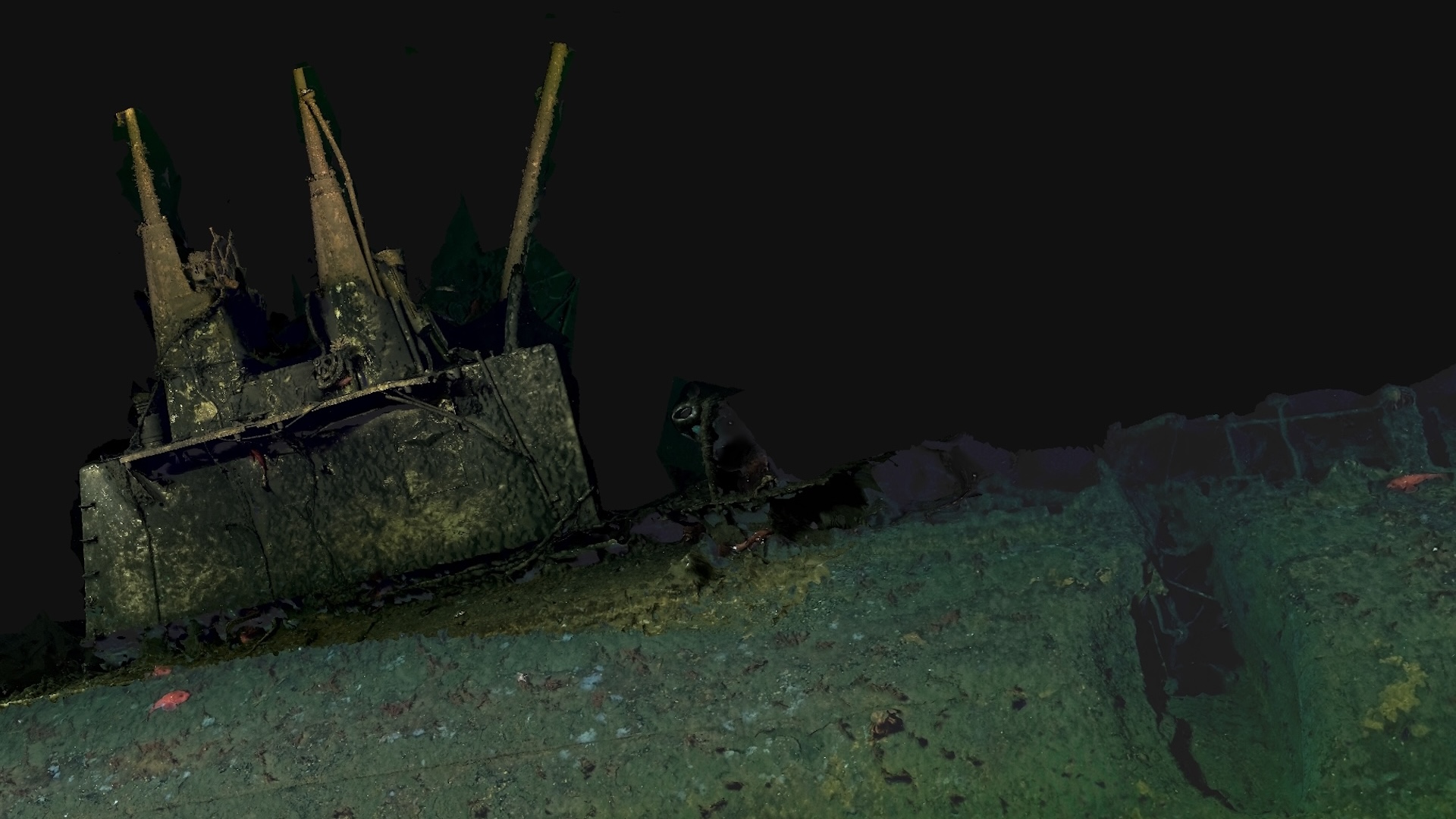
The reconstruction shows the submarine's "conning" tower and the damage on the submarine's hull that caused it to sink.
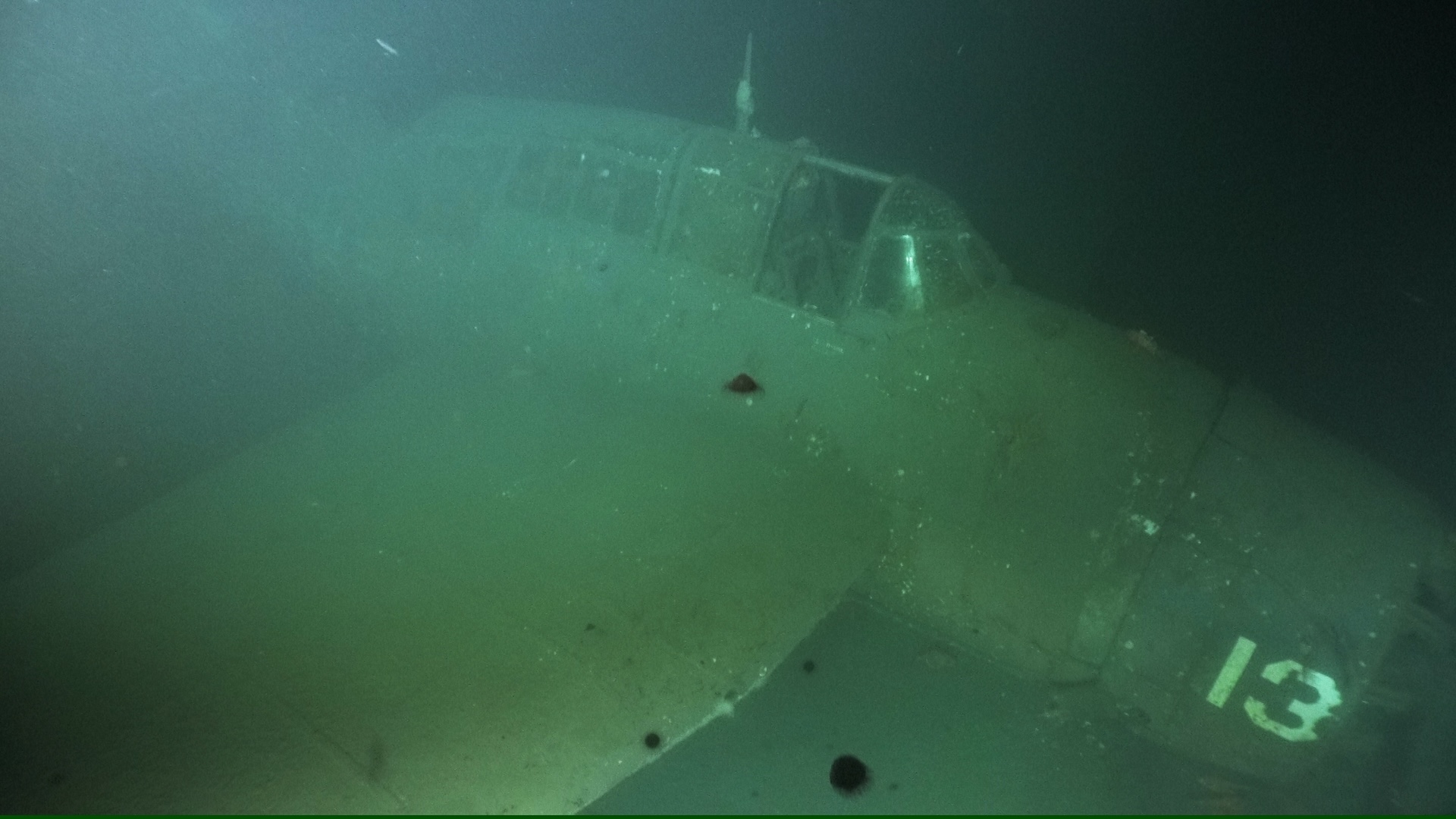
The expedition also surveyed the wreck of a U.S. Navy Grumman TBF Avenger torpedo bomber, which was being used for training in 1950 when it crashed nearby.
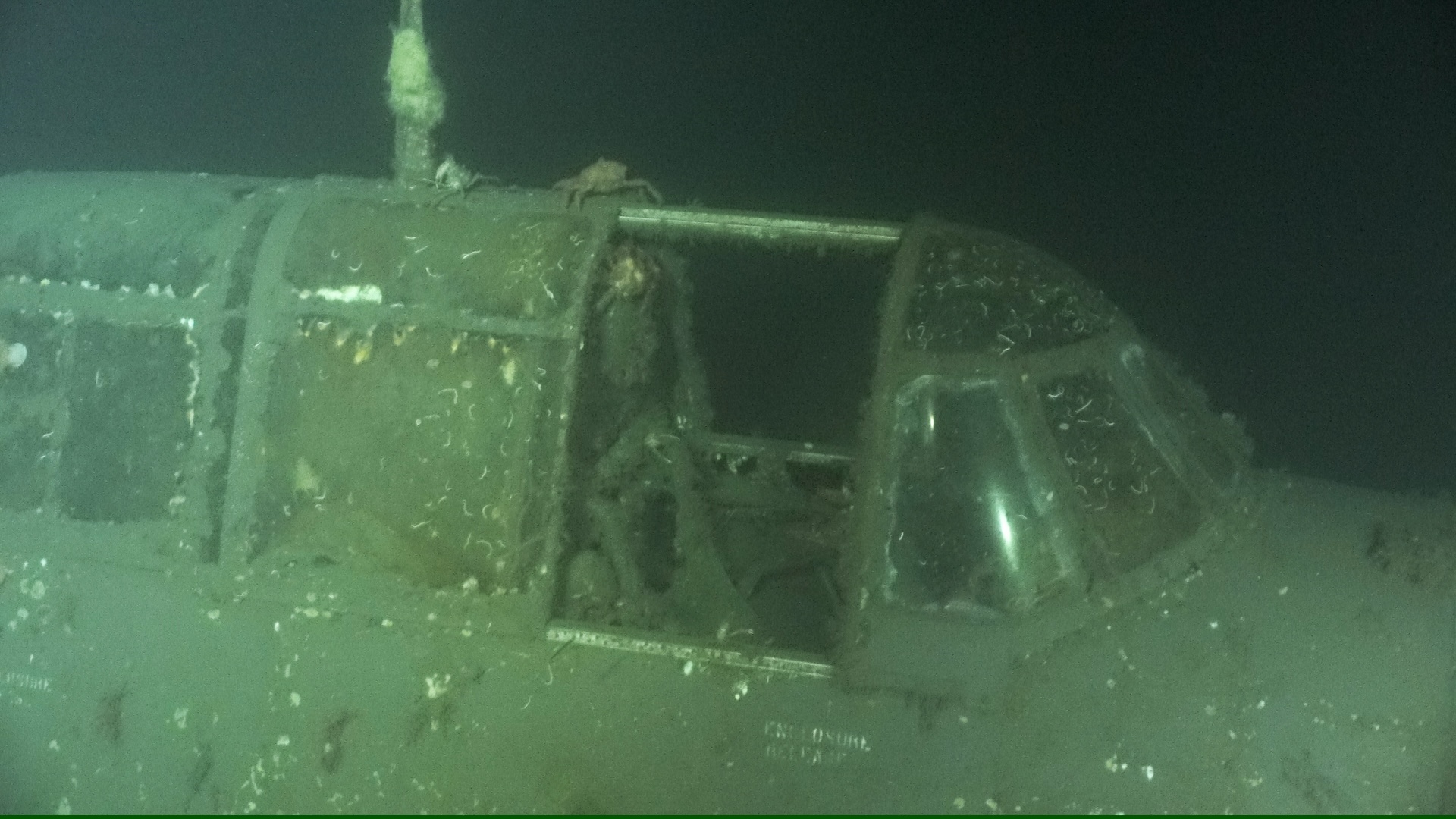
The latest dives enabled the U.S. Navy to identify the aircraft and to confirm that no lives were lost in the accident.
Stickrott said he had worked out the submarine wreck's rough location from Navy records and that the AUV Sentry was sent out to survey the area. It located the wreck on the first afternoon of searching.
The F-1 submarine now lies on its starboard (right) side with its bow (front) to the northwest, and subsequent explorations with the HOV Alvin showed the sub was "remarkably intact" after being underwater for more than 100 years, Stickrott said.
The wreck is now a war grave for the 19 crew who died in the 1917 accident. WHOI and the Navy agreed not to make contact with the wreck, "to preserve its condition and be respectful of its legacy," he said.
Training bomber
The expedition also surveyed the nearby wreck of a U.S. Navy Grumman TBF Avenger torpedo bomber, which crashed in the same area when it was being used as a training aircraft in 1950.
Stickrott explained that the bomber wreck had been known to WHOI for several years and had sometimes been the target for engineering and training dives on Alvin. But the wreck's location had been unknown to the U.S. Navy, so the site was surveyed to add information to the Navy's records, he said.
The dives enabled the NHHC to establish an official identification of the aircraft and to confirm that the crew on board had escaped alive from the crash, Stickrott said.
He added that he had always been curious about the number "13" stenciled on the engine nacelle of the sunken aircraft — an "obvious superstitious element." The number turned out to refer to the training squadron that the aircraft belonged to at the time of the crash, "but I often wonder what the pilot and squadron personnel thought," he said.
Editor's note: This story was updated at 9:43 a.m. EDT on May 27 to note that the sub was initially found in the 1970s, not earlier this year. Its location was kept classified for years. The latest mission is the first time the wreck has been surveyed with high-resolution imaging.
Tom Metcalfe is a freelance journalist and regular Live Science contributor who is based in London in the United Kingdom. Tom writes mainly about science, space, archaeology, the Earth and the oceans. He has also written for the BBC, NBC News, National Geographic, Scientific American, Air & Space, and many others.
You must confirm your public display name before commenting
Please logout and then login again, you will then be prompted to enter your display name.
